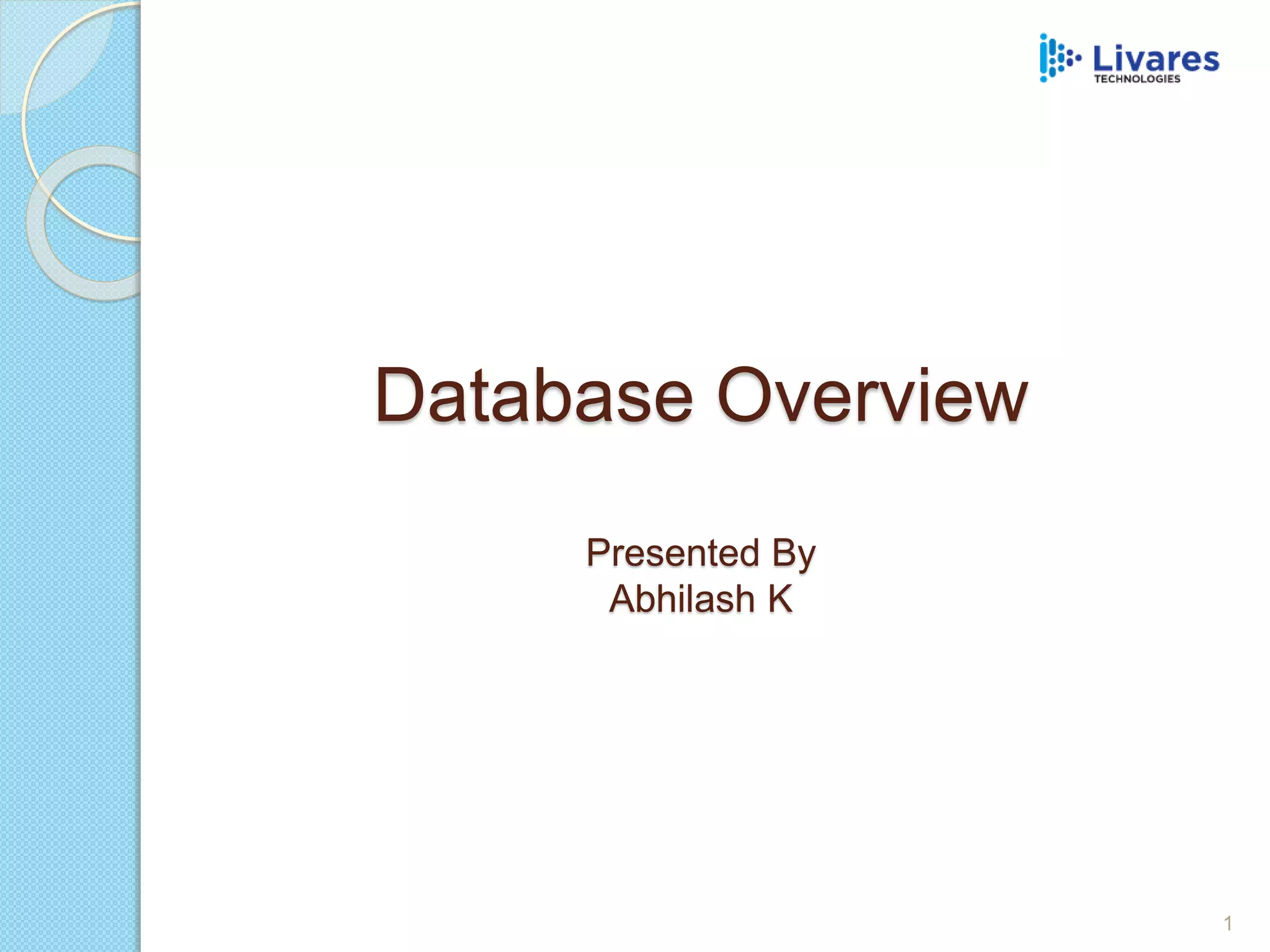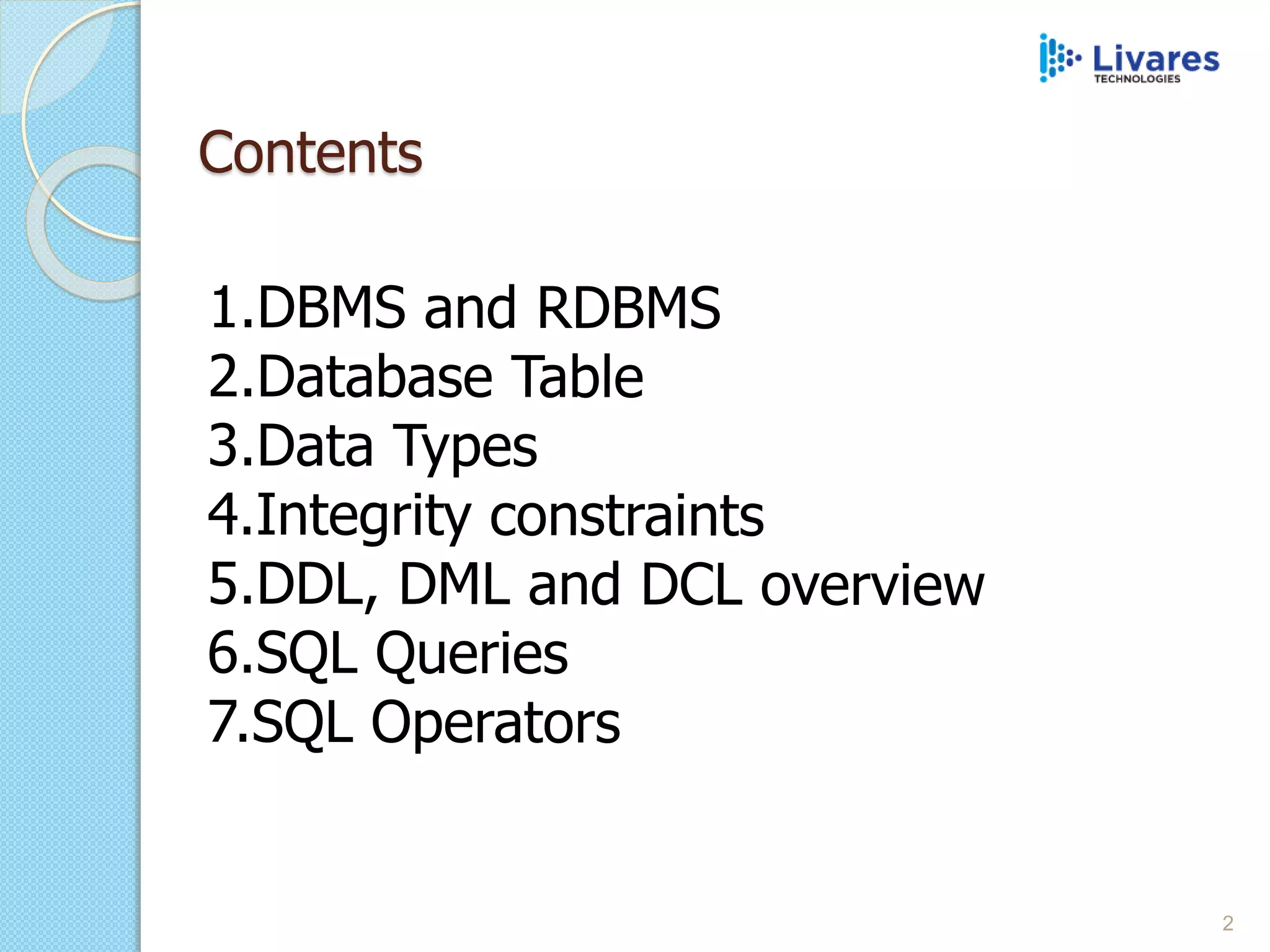The document provides a comprehensive overview of database management systems (DBMS), particularly focusing on relational database management systems (RDBMS) and structured query language (SQL). It covers fundamental concepts such as table structure, SQL components, integrity constraints, performance tuning, and advanced concepts. Additionally, it includes practical aspects like SQL query syntax, data types, and normalization principles for optimal database design.











![Creating Table
NOT NULL WITH DEFAULT
The default value is stored,when a row is inserted without a specified
value for this column.
The default value is
Zero (0) for numeric data fields
Blank [empty] for character data fields
Current date for DATE fields
12](https://image.slidesharecdn.com/databaseoverviewv1-191212115249/75/Database-Overview-12-2048.jpg)























![Sub Query
Subquery
Is a query within a query [SELECT]
Different Types
➔ Stand alone [independent existence]
➔ Co-related [dependent on outer select]
36](https://image.slidesharecdn.com/databaseoverviewv1-191212115249/75/Database-Overview-36-2048.jpg)






![INDEX
As the name indicates, indexes are used to speed up the
SELECT queries.
Types :
➔ Clustered : Created by default when a primary key is
created on the table.
➔ Non Clustered [Secondary] : All indexes other than the
clustered index are known as secondary indexes.
● Restrictions :
✔ A table can contain a maximum of 64 secondary indexes.
✔ A maximum of 16 columns only permitted for multicolumn
indexes.
43](https://image.slidesharecdn.com/databaseoverviewv1-191212115249/75/Database-Overview-43-2048.jpg)






